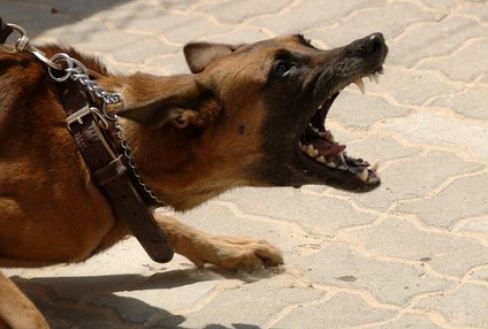Symptoms of Rabies in Dogs – Get inside the transmission, symptoms, and treatments of canine rabies, a disease that can also affect other species
Anger is a virus, a zoonosis ( a disease that can be transmitted from animals to man) almost eradicated today, but still very feared. This is because of the mortality rate of the disease, which affects only mammals, is almost 100%. The main transmitters are wild animals, such as bats, possums, and monkeys, which infect dogs, cats and humans accidentally. The contagion occurs through the exchange of secretions, blood contact or bite. In dogs, this disease is known as canine rabies.

Canine rabies has some types and stages and is considered incurable, so it is essential to prevention through vaccination. In addition, because dogs are mostly domestic animals, they are the main transmitters of the disease to humans. You need to be aware of the symptoms to have a quick diagnosis and prevent the spread of the disease in the home.
Symptoms of Rabies in Dogs
The main symptoms are the sudden onset of aggression in the animal, excessive salivation and paralysis. In addition to behavior change, a happy and playful dog can become a quiet, modest, and tired animal. These symptoms are showing up according to the stages of canine rabies.
The symptoms will only appear after the incubation period ranging from 3 to 6 weeks. After that these symptoms will depend on the stages of canine rabies. The first of these is prodomic, in which behavior takes place, the animal hides in dark places, presents an unusual agitation in short spaces of time and greater disobedience, besides eating unusual things like wood. The prodromal, one of the phases of canine rabies, lasts only 1 to 3 days.
The second phase of the disease comes with a more aggressive dog that tries to bite everything and everyone. The animal can also self-attack, causing serious injury. In this period that lasts around 1 day the dog also saliva much, stopping to eat and to drink water. In the last phase, the animal suffers from generalized convulsions and enters a paralytic state and will die within 48h.
Forms of canine rabies
Dog rage can happen in two ways, furious rage, mute anger and intestinal rage. Symptoms may vary by form.
Angry rage
Furious rage is the most common. The dog beats a lot and ends up getting freaky. Agitation, aggression and excessive drool with foam, seizures, and paralysis are the main features. An animal with angry rage has around 4 to 7 days of life only.
Mute anger
As the name itself says, in anger changes the dog becomes more calm and melancholic. In it the animal does not present agitation, does not bark much and does not attack, it tends only to isolate itself in the shadows, not to answer by the calls and to stop eating and drinking. An animal with silent rage will also suffer from paralysis.
Intestinal rabies
Intestinal rabies is the rarest of existing forms of canine rabies. In it the dog does not present any of the most common symptoms of rabies, nor does the paralysis. The animal will have frequent vomiting and colic until it dies. An animal with intestinal rabies does not live for more than 3 days.
Anger vaccine
Vaccination against canine rabies should be done from and only after the fourth month of life of the puppy. The booster should be done one year after the first dose. This rule also applies to cats that can contract feline rabies.
